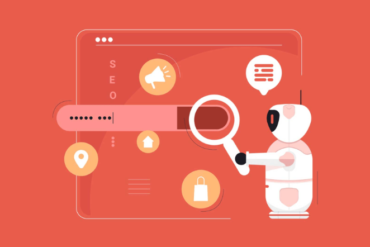By
There’s no other way to say it: If you’re doing influencer marketing in 2019, there’s a decent chance it sucks. And it’s time for an honest conversation. So, let me restate: There is a lot of bad influencer marketing out there. The industry is full of celebrity-level social media personalities who charge a fortune for insincere product endorsements, blatant cash-grab posts that come across like low-budget commercials, and brands that are dazzled by follower counts rather than real engagement. And this is not likely to change unless we get back to what made influencer marketing amazing in the first place.
Back in the early 2000s, the notion of social networks hadn’t taken hold yet. Blogging-specific resources and platforms were on the rise, however, and I was one of many who embraced these emerging technologies in order to share my thoughts and connect with like-minded people online.
Typepad, Diaryland, Diary-X, LiveJournal: We used these platforms to carve out spaces for expressing the joys and frustrations of our daily lives. Many of us were young parents, and blogging was more than a hobby — it was an outlet, a way to access a digital village of support and commiseration. This so-called “mommy blogging” trend eventually paved the way for today’s influencer marketing industry.
There was a sort of magic to those early days of blogging when sharing one’s innermost thoughts with the push of a button was a novelty rather than a given — from swapping war stories, intimate confessions, moments of hilarity — and talking about recent purchases in mind-bending detail.
It doesn’t sound particularly exciting now, but this is when brands started paying attention. Because these conversations were driving sales. Suddenly, a recommendation from a well-read blog could empty a store’s inventory overnight. Because product reviews and recommendations were a natural extension of blogging. And it was fun — fun to try a new moisturizer that a stranger in Iowa loved, or a baby carrier worn in a photo that everyone pounced on (“Wow, who makes that?”). It was fun to discover new things, or even better, solve someone’s problem with a pitch-perfect suggestion.
When did it stop being fun? No question about it: when money got involved. As blogging matured and changed, so, too, did the options for monetization. First came the banner ads, which mostly lurked in website sidebars before creeping into more intrusive locations. In 2006, BlogHer announced its blog ad network at its San Jose conference. It probably sounds crazy now, but that launch was incredibly controversial at the time. Many of the women in attendance felt that monetization was going to kill everything that was special about the community. If I’m being honest, I thought those cynics were being ridiculous. But sure enough, display advertising gave way to sponsorships, and before you knew it every confessional blog post seemed to include an awkward brand segue. Some were pretty lame, too: This sad story about my dying grandma brought to you by ChompsGood Dog Food!
Fast-forward to 2019, in our highly-connected world brimming over with clickbait, #ads and #sponcon. Personal blogging has largely evolved from long-form essays to mobile-friendly listicle posts and image-centric social media content. An entire industry has risen around online personalities promoting products. But this industry is going to suffer the same fate as traditional advertising if we can’t recapture some of the reasons that made it successful in the first place.
These days, consumers are growing weary of endless endorsements and celebrity-level influencers shilling everything from laxative teas to dubious-sounding island music festivals. People are suspicious of influencer fraud, and frankly, we’re tired of seeing Instagram models perched on inflatable swans hawking flavored seltzer water.
It’s time for brands and influencers alike to make influencer marketing fun again. How does this happen?
Step One: Find the passion. Find the passionate people — creators and brands alike — who give a damn about forging real connections and providing actual value to engaged audiences. Find the people who care more about relationships and less about follower numbers.
Step Two: Forge partnerships that actually make sense. Look, if you’re Pepsi and you want to work with Kendall Jenner, fine. (Just maybe don’t trivialize a serious social and political movement while doing so.) But most brands should be looking for influencers whose interests and values align with their own.
Step Three: Stop the BS. Stop the flat tummy product shout-outs, the poor (or missing) FTC disclosures, the cringingly overly-staged photos, and the accounts that are more about advertising and less about authenticity.
Influencer marketing doesn’t have to be one more bummer byproduct of an overly-commercialized internet. Just like the old days, influencer-shared recommendations and brand messaging can be a natural, enjoyable part of our content consumption rather than yet another disruptive, shallow ad experience. Make audiences the priority and deliver something of value, and the money will follow.
Feature Image Credit: Getty
By
Founder and CEO of Sway Group, an influencer marketing agency in the SF Bay Area.





